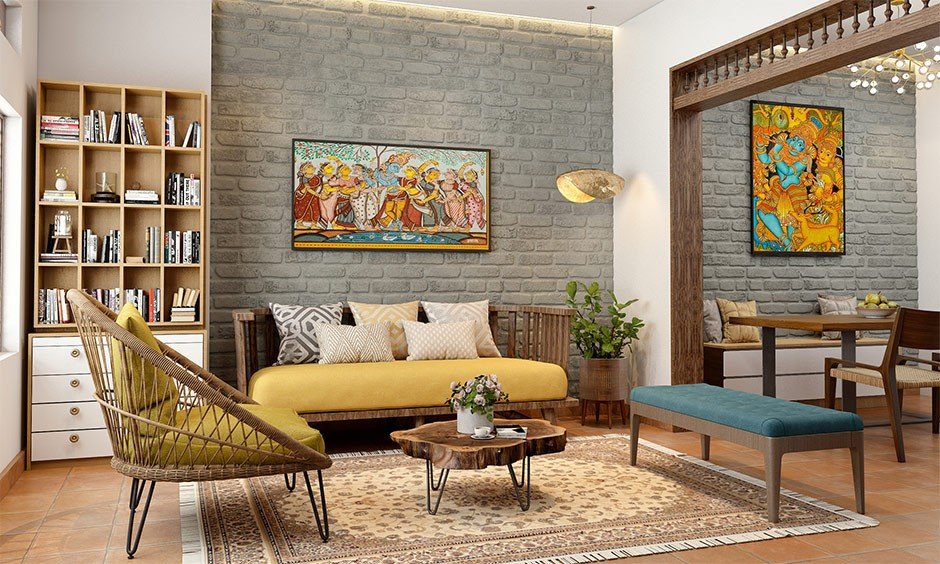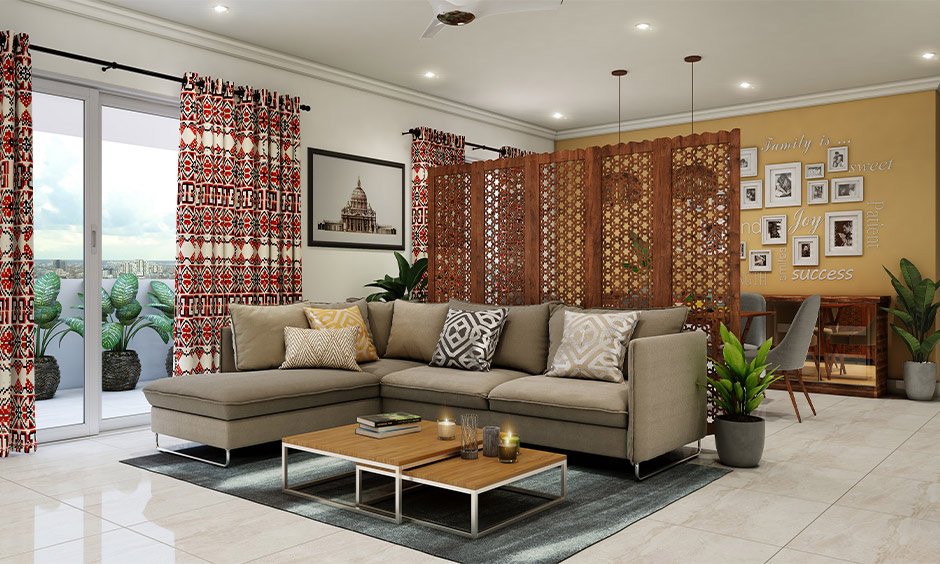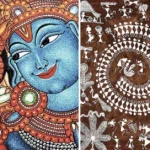Tips for Incorporating Indian Art into Modern Design
Incorporating Indian art into modern design can infuse your space with vibrant colours, rich traditions, and unique textures. Incorporating Indian art adds a touch of elegance and cultural depth to contemporary interiors. Here are some tips to help you seamlessly blend Indian art with modern design.
1. Choose the Right Art Form
Indian art encompasses a wide range of styles, from traditional miniature paintings to contemporary sculptures. When incorporating Indian art, select pieces that resonate with your style and fit the theme of your space. For example, you might choose intricate Madhubani paintings for a colourful touch or sleek metal sculptures for a modern look.

2. Balance Traditional and Modern Elements
A successful design integrates Indian art with modern aesthetics. Mix traditional Indian art forms with contemporary furniture and decor. For instance, pair a classic Tanjore painting with minimalist furniture to create a balanced look. This approach ensures that the art enhances the space without overwhelming it.
3. Use Indian Art as a Focal Point
To make a statement, use Indian art as a focal point in your room. Hang a large piece of traditional art, such as a Warli painting, on a prominent wall. This draws attention and adds a distinctive element to the room. Surround it with simpler decor to highlight the artwork.
4. Integrate Indian Textiles
Textiles are a beautiful way of incorporating Indian art into modern design. Use fabrics with traditional Indian patterns, like block prints or embroidered cushions, to add texture and colour to your space. Indian rugs and throws can also bring warmth and cultural flair to a room.
5. Experiment with Colors and Patterns
Indian art is known for its vibrant colours and intricate patterns. When integrating Indian art, embrace these bold elements. Choose modern furnishings that complement the artwork’s colours and patterns. For instance, a room with bright Indian prints can be balanced with neutral or monochromatic furniture.
6. Combine Art with Modern Technology
Blend Indian art with modern technology to create a dynamic look. Use digital frames to display rotating images of traditional art or project art onto walls during events. This combination of traditional and digital elements can bring a fresh perspective to classic designs.
7. Create a Gallery Wall
A gallery wall is an excellent way of incorporating Indian art cohesively. Mix different art forms, such as paintings, prints, and sculptures, to create a visually engaging display. Arrange the pieces in a grid or salon style to showcase the diversity of Indian art.
8. Use Art in Unexpected Places
Incorporate Indian art into unexpected areas of your home, like the bathroom or kitchen. Indian tiles, for example, can add a touch of elegance to these spaces. By placing art in less traditional locations, you can surprise and delight your guests.
9. Pair Art with Contemporary Lighting
Enhance the impact of Indian art with modern lighting. Use spotlights or gallery lights to highlight your artwork. The right lighting can bring out the colours and details of Indian art, making it a striking feature in your design.
10. Mix and Match Art Styles
Don’t be afraid to mix different styles of Indian art. Combine traditional and contemporary pieces to create a layered look. For example, you could pair an antique Pattachitra with a modern abstract sculpture. This eclectic approach can add depth and interest to your space.
11. Incorporate Indian Art into Furniture
Another way to integrate Indian art is by using it in furniture design. Choose pieces with Indian-inspired carvings, inlays, or upholstery. A coffee table with intricate inlays or a chair with traditional fabric can add a touch of Indian elegance to modern furnishings.
12. Highlight Art with Custom Frames
Custom framing can enhance the presentation of Indian art. Choose frames that complement the artwork and your decor. For traditional pieces, ornate frames can add a classic touch, while sleek, modern frames can give a contemporary feel.
13. Use Art to Define Spaces
Incorporating Indian art can help define different areas in an open-plan space. Use a large Indian rug or a series of paintings to delineate a dining area from a living space. This can create visual boundaries and add character to each section of the room.
14. Focus on Craftsmanship
When selecting Indian art, pay attention to the craftsmanship and details. High-quality, well-crafted pieces will stand out and contribute to the overall sophistication of your design. Look for artisanal work that showcases the skill and tradition of Indian art.
15. Embrace Cultural Context
Respect and embrace the cultural context of Indian art. Understand the significance of the artwork and its origins. This knowledge can help you appreciate the art more deeply and incorporate it meaningfully into your modern design.
Conclusion
Incorporating Indian art into modern design allows you to celebrate rich cultural traditions while creating a contemporary space. By balancing traditional elements with modern aesthetics, experimenting with different styles, and using art in various ways, you can achieve a harmonious and visually appealing design. Embrace the vibrant and diverse world of Indian art to enrich your living spaces with a unique blend of old and new.



